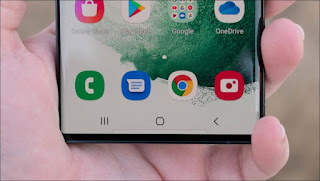Google added a movement -based navigation to Android in 2018. But until now there are still many people using three virtual buttons at the bottom of the screen to navigate.
One of the main factors why so many people still use navigation using three virtual buttons because the vendor is pairing by default. So users must switch to movement mode manually, and not everyone knows it can.
Though movement -based navigation provides more space on the screen to display content. Simply put, by removing the navigation bar, you will have more screen space for other things.
Indeed this is not a big problem. But with many Android phones have large screens, the use of movement -based navigation will make a real difference. As you can see on the screenshots in Bawan.
Reporting from Howtogeekm Navigation bar blocks several rows of text in the browser. If you want to maximize what can be seen on the screen, movement -based navigation is the right way.
Multitasking is another benefit of movement navigation. For example, if you want to switch to the application, we knock the recent button, then select. Or you can also press the double button to change the two most recent applications.
While navigation of movements, you simply swipe horizontally from left to right or vice versa to change applications quickly. Of course this is cutting time rather than pressing the button earlier.
Other benefits provide natural interactions on the touch screen. For example the 'return' movement can be done by swiping the fingers from left to right or vice versa on the edge of the screen.
Likewise if you want to return to the home screen. Do a simple swipe up from the bottom of the screen.
That is most of why movement navigation is better than three buttons. Let's try it on your Android phone!

